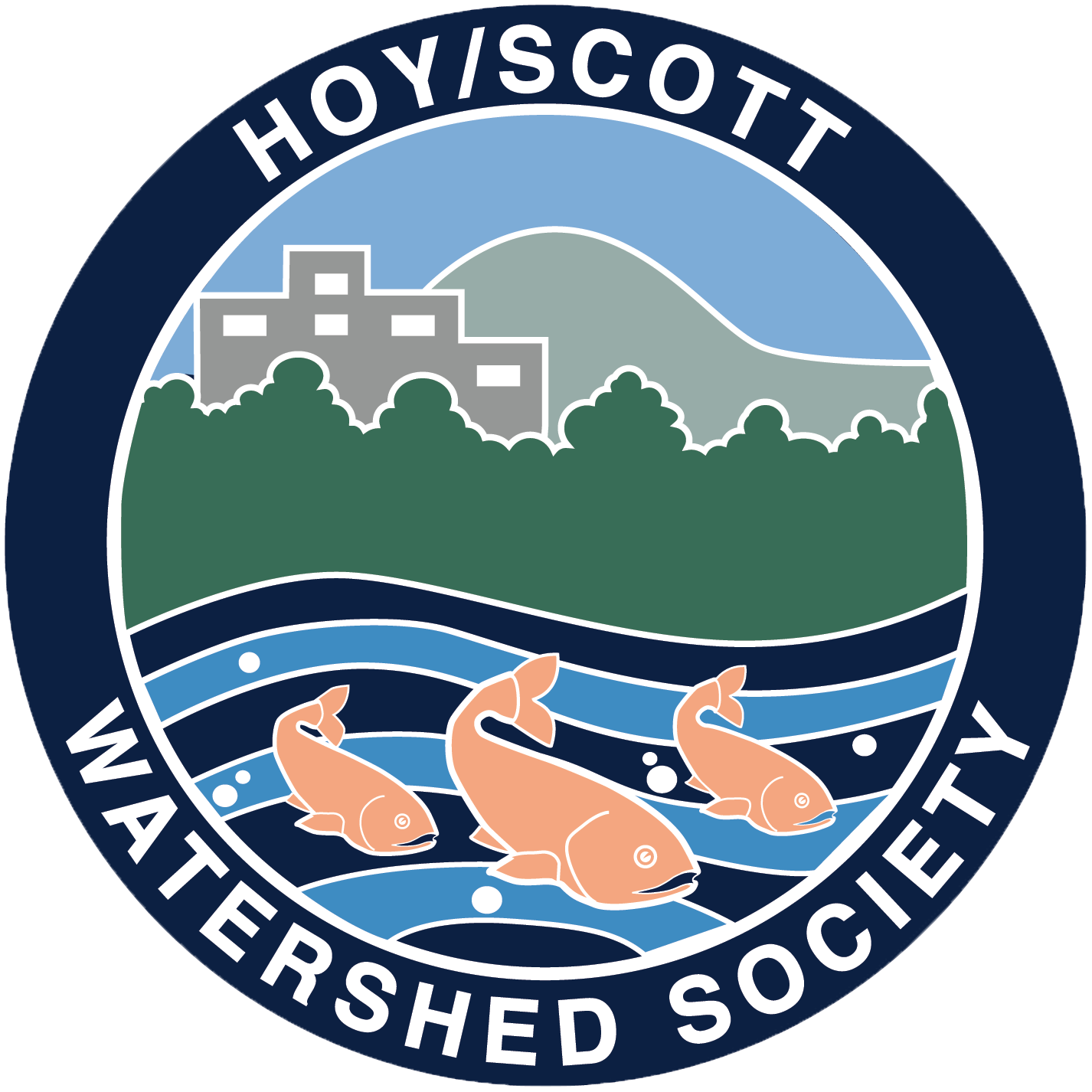Coho salmon eggs (Photo: HSWS)
For salmonid enhancement purposes Hoy-Scott Watershed Society members actively fished and monitored for coho salmon broodstock collections in late 2019, however due to low returns efforts for collection ceased early.
Our team was successful in a coho broodstock collection of close to 15,000 eggs. 3 of our 4 trays
in the incubator have reached the eyed stage and have now been shocked (addled). The 4th tray is nearing the ATU (Accumulated Thermal Units) where we will see the eggs becoming eyed as the next stage in their life cycle.
To date, survival rates of the fertilized eggs have been excellent which can be a result of many factors including water temperature/quality, handling by staff, disinfection of eggs to equipment and biosecurity. As a reminder to all, water quality can deteriorate from road salts, ice melting products, heavy rains and discharging of spa equipment (pools/hot tubs) to storm drains.The hatchery water supply is fed entirely from Hoy Creek, and harmful substances can effect broodstock mortality in the hatchery as well as the mortality of wild salmon who have spawned in the creek.
HSWS fish trap in Hoy Creek used for broodstock collection. (HSWS photo)
We've been experiencing low water temperatures since late November and this will naturally slow the broodstock's development. In predicting the hatch we calculate ATU's (Accumulated Thermal Units) which are recorded daily. As the eggs approach 448 - 475 ATU, we will see the next stage. The hatch is a result of free oxygen in the egg and as the embryo requires more, it breaks free of the shell but holds on to the yolk sack (food source).
This next stage is Alevins - more on this in the next update.
Coho fry held in our rearing pond are healthy and at little risk of mortality during this time of year having a higher amount of dissolved oxygen than we would see during warm water temperatures throughout the summer months. However, they are susceptible to environmental conditions such as water quality as mentioned as earlier. The Fry are slower to respond at this time of year due to lower temperatures and when below 6 C, feeding is even withheld due to a slowing metabolic rate in the Fry.
Eggs being prepared for incubation at Hoy Creek Hatchery (Photo:HSWS)
ATUs explained:
ATU stands for Accumulated Thermal Units. This is the method we use to predict when our salmon eggs will hatch, as well as keep track of the progress of our eggs. Here's how it works:
On the day the fish are spawned, we measure the water temperature, and record it in the "temp" column in our logs, as well as the ATU column.
Each day, the assigned volunteer goes to the hatchery, records the water temperature in the current day "temp" column, and adds it to the previous day's entry in the ATU column.
For example, if the temperature is 9 degrees on Nov. 7 and 9 degrees on Nov. 8, then the ATU would be 18; and if the temperature is 10 degrees on Nov. 9 the new total would = 28 ATUs.
Once this number hits ~ 250 we will know the eggs are eyed and we can clean them. The eggs develop according to water temperature, cooler water, slower development.
In our next update we'll cover the next milestone (Alevin stage) in coho salmon development.
If you have questions or are interested in volunteering with the society, please contact us at hoyscottwatershed@gmail.com.
(Written by Tyler Storgaard, Asst. Hatchery Manager)
Inside the incubation room at Hoy Creek Hatchery. Calculations of broodstock. (HSWS photo)




